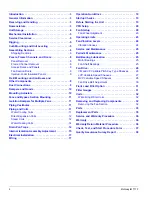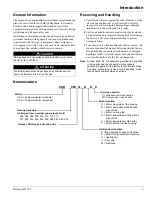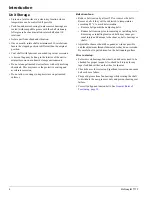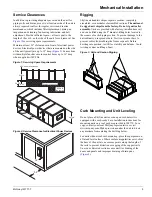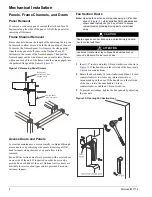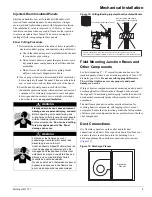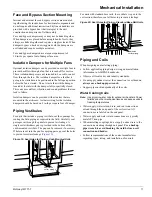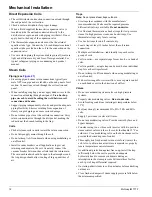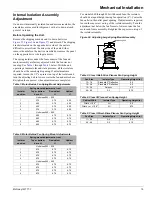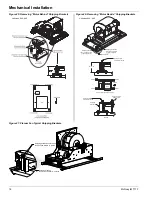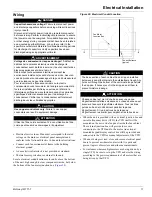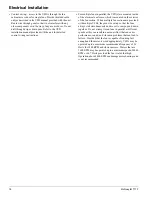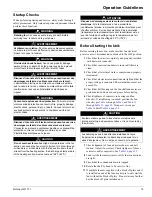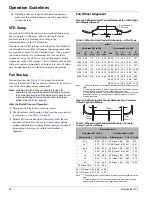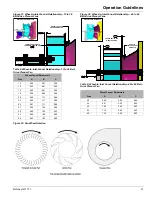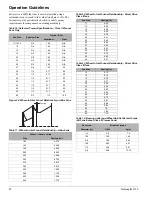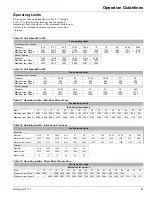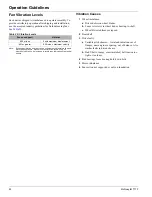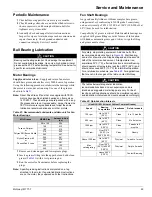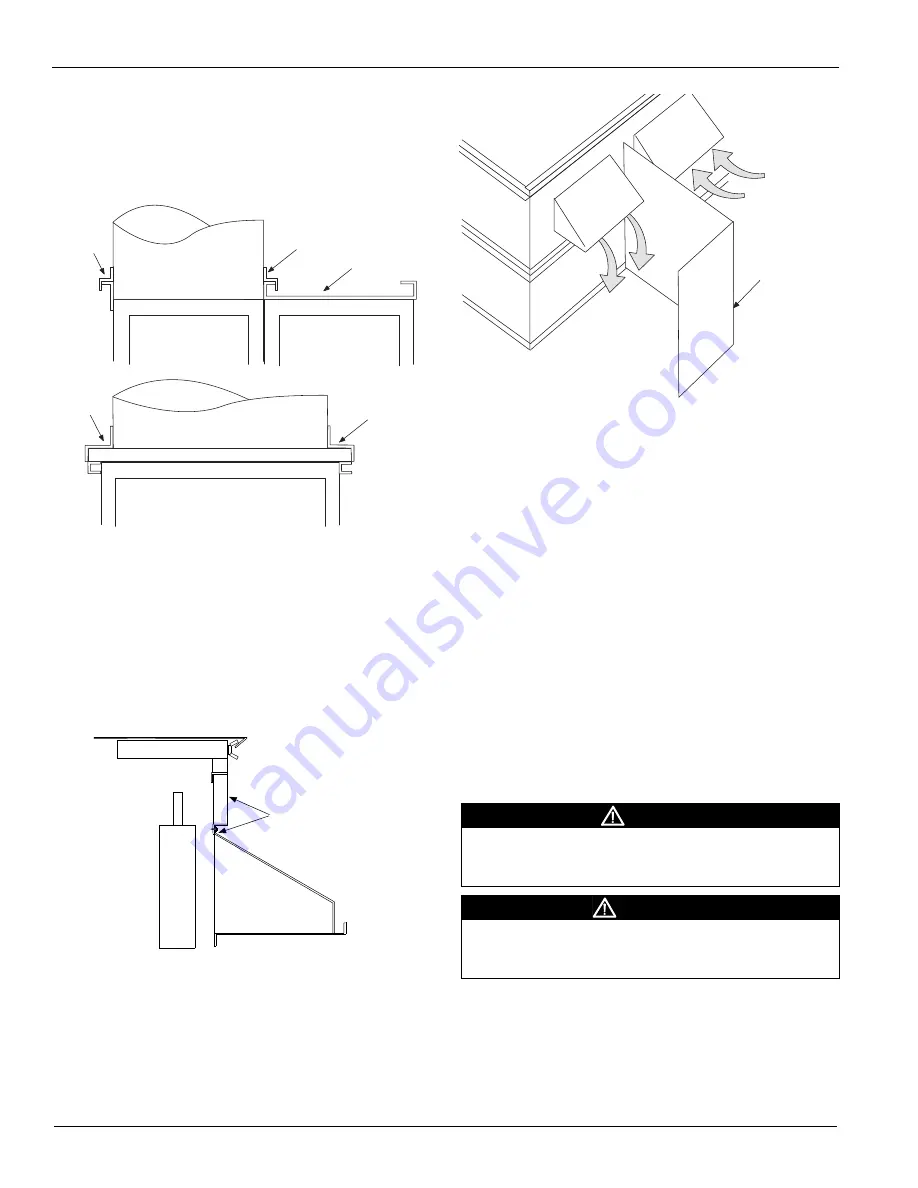
10
McQuay IM 777-7
Mechanical Installation
If the unit has a top mixing box or economizer damper or a top
duct connection, field fabricate and install flashing to divert
moisture from the connection. The flashing must lap over the
standing seams of the top panels. The flashing also must lap
over the side edges of the unit (
Figure 16
).
Figure 16: Flashing Over Top Panels and Sides of Units
Dampers and Hoods
Side dampers may be provided in the mixing box and
economizer sections of units. When dampers are provided, a
removable panel is located above the weather hood to provide
access to the damper drive shaft. Other access may be
available depending on the specific construction of the unit
(
Figure 17
).
Figure 17: Filler Panel Over the Weather Hood
When units are ordered with exhaust hoods and intake hoods
adjacent to each other, install a field-supplied barrier to
prevent recirculation of exhaust air into the intake openings.
(
Figure 18
).
Figure 18: Field-Installed Barrier Between Hoods
Mounting Actuators
The installing contractor is responsible for the mounting of all
field-installed actuators. No provisions are made for the
location of these actuators due to the number of options and
arrangements available and the variety of specific applications.
Typically, actuators are mounted inside the cabinet. Provide
proper support for the actuator to avoid excessive stress in the
cabinet, linkage, or damper shafts.
Note:
Damper blades are at full flow when open to 70 degrees.
Do not open blades further than 70 degrees.
Fresh air and return air dampers can be linked together and
driven from the same actuator if the dampers are the same size.
If the dampers are different sizes, they must be driven by
separate actuators and controlled appropriately. Exhaust
dampers are always driven by a separate actuator.
A typical rotary electric actuator can handle up to 40 sq. ft. of
damper. For pneumatic actuators, allow 5 in-lb per square foot
of damper area.
F l a s h i n g
D u c t
F l a s h i n g
U n i t t o p
p a n e l
F l a s h i n g
D u c t
F l a s h i n g
Remove screws
and panel to access
damper control shaft.
Hood
CAUTION
Maximum damper rotation is 70°. Maximum shaft torque is 205
inches/pound. Greater rotation or torque can cause equipment
damage.
ATTENTION
La rotation maximale des volets est de 70°. Le couple (torque)
maximum de l’arbre est de 205po/lb. Une plus grande rotation
(ou torque) peut endommager l’équipement.
E x h a u s t
I n t a k e
B a r r i e r


